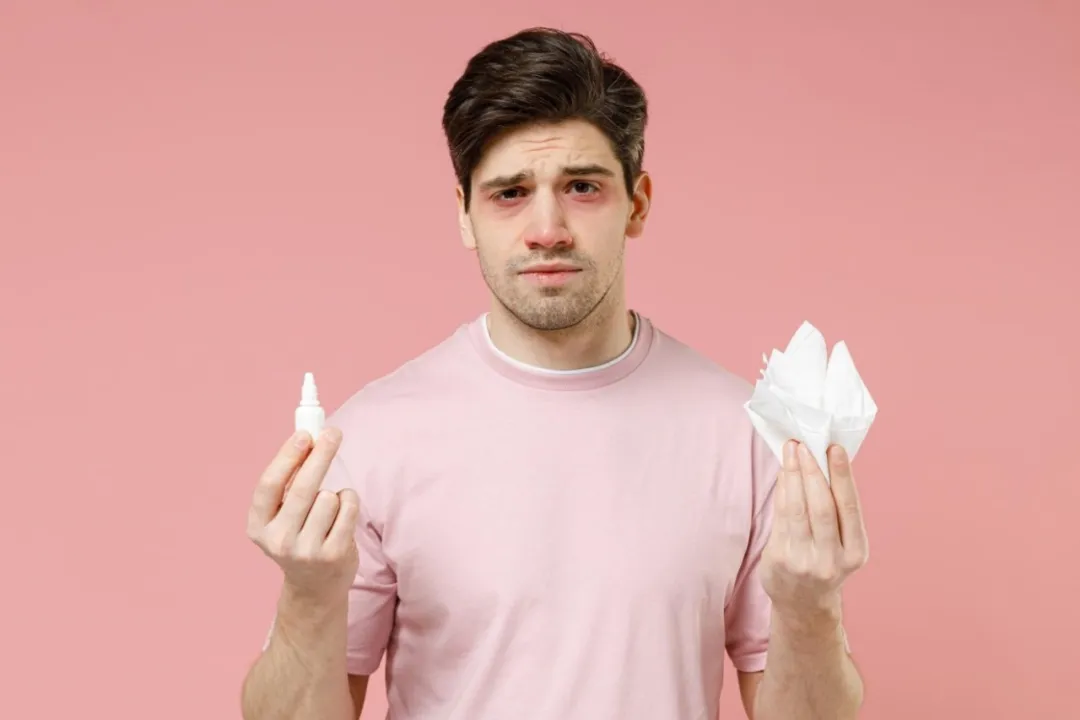"One spray, instant relief—like unblocking a meridian in your nose!" While browsing online for sinusitis remedies, Xiao Cheng stumbled upon a highly praised post about an imported nasal spray. Enticed, she ordered it immediately. The results were astonishing: long-lost breathability made her treasure the spray, using it at the slightest hint of discomfort.
Five years later, the tiny bottle became a lifeline. Xiao Cheng found herself needing a spray every two hours. Without it, nasal congestion would surge back like a tidal wave, leaving her breathless, dizzy, and even experiencing heart palpitations.
Her doctor delivered a grim verdict: her nasal blood vessels had lost all elasticity, and surgery might be required to rebuild nasal function.
How did a routine attempt to manage sinusitis spiral into a life-threatening crisis? The so-called "miracle" nasal spray, it turns out, is dragging users into an inescapable respiratory trap.
 The Truth Behind “Miracle” Sprays: Vasoconstrictor Nasal Sprays
The Truth Behind “Miracle” Sprays: Vasoconstrictor Nasal Sprays
Many over-the-counter nasal sprays fall under the category of
vasoconstrictor nasal sprays (or decongestants). They work by stimulating receptors in nasal blood vessels to rapidly constrict them, reducing swelling and relieving congestion.
In clinics, patients often pull out an array of sprays—imported brands, domestic pharmacy staples, medical or non-medical products—most of which are vasoconstrictors at their core.
For sinusitis sufferers, corticosteroid nasal sprays are the gold standard. These regulate inflammation at its source, offering safer long-term relief, though they require days to take effect. In contrast, vasoconstrictors deliver instant gratification: swollen mucosa shrinks upon contact, airways clear miraculously, and the euphoria of effortless breathing becomes addictive.
Yet, this fleeting relief comes at a devastating cost.
1. The Erosion of Nasal Defenses
Nasal mucosa is the respiratory system’s first line of defense. Its cilia and mucus layer filter dust and viruses while maintaining moisture. Prolonged vasoconstrictor use destroys this barrier, causing cilia loss, gland atrophy, and irreversible damage to the nose’s self-cleaning capacity.
Over time, nasal blood vessels grow desensitized to the spray. Relief shortens, forcing users to spray more frequently—from 2-3 times daily to hourly or even every 10 minutes. Trapped in a vicious cycle of "spray to breathe, breathe to spray," they become slaves to the bottle.
2. The Underestimated Addiction Crisis
Attempting to quit? Blood vessels, now dependent on the spray, lose their self-regulating ability.
Rebound congestion strikes: nasal blockage worsens beyond pre-treatment levels, inflaming mucosa and accelerating
drug-induced rhinitis.
What is drug-induced rhinitis?
Also called rebound or toxic rhinitis, it’s a chronic inflammation caused by long-term misuse of vasoconstrictors without medical guidance. Symptoms include persistent bilateral congestion and dryness.
Worse, chronic use desensitizes nasal mucosa to other treatments (e.g., steroids, antihistamines), rendering standard therapies ineffective and leaving patients feeling "incurable."
3. Systemic Cardiovascular Risks
Vasoconstrictors don’t just harm the nose. Absorbed into the bloodstream, they trigger systemic vasoconstriction, spiking blood pressure and heart rate. For those with hypertension or coronary disease, this can provoke angina, heart attacks, or cerebral hemorrhage. Even healthy users face accelerated atherosclerosis and elevated cardiovascular risks.
Why Do Doctors Prescribe Vasoconstrictors Sometimes?
In acute cases (e.g., severe nasal blockage), doctors may prescribe short-term use—
strictly limiting doses to 2-3 times daily for ≤7 days—while pairing it with long-term therapies like corticosteroids.
The critical difference? Medical supervision. Without expertise, self-adjusting doses or transitioning treatments is perilous.
Is Recovery Possible?
Yes.
First:
Stop the spray immediately. Initial withdrawal may worsen congestion and symptoms, but this signals healing—nasal mucosa is regaining self-regulation.
Short-term users (<1 year): Under medical guidance, taper usage while switching to corticosteroid sprays.
Long-term users (years): Surgery may be needed to address drug-induced rhinitis.
A Final Warning
In our desperation for instant relief, we risk trading fleeting comfort for lasting harm. Nasal health demands patience and professional care. True healing lies not in magic sprays, but in science-backed discipline.
